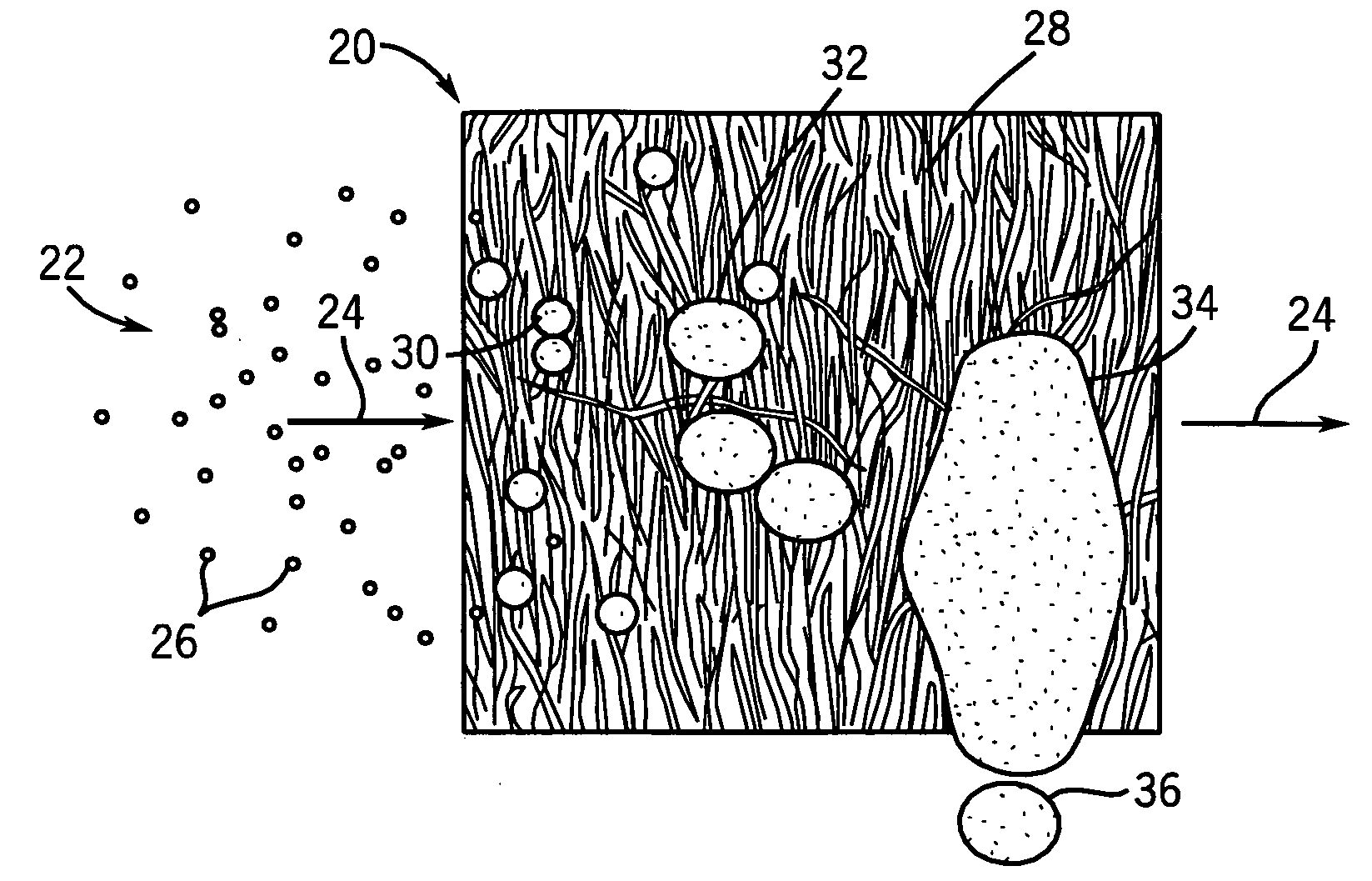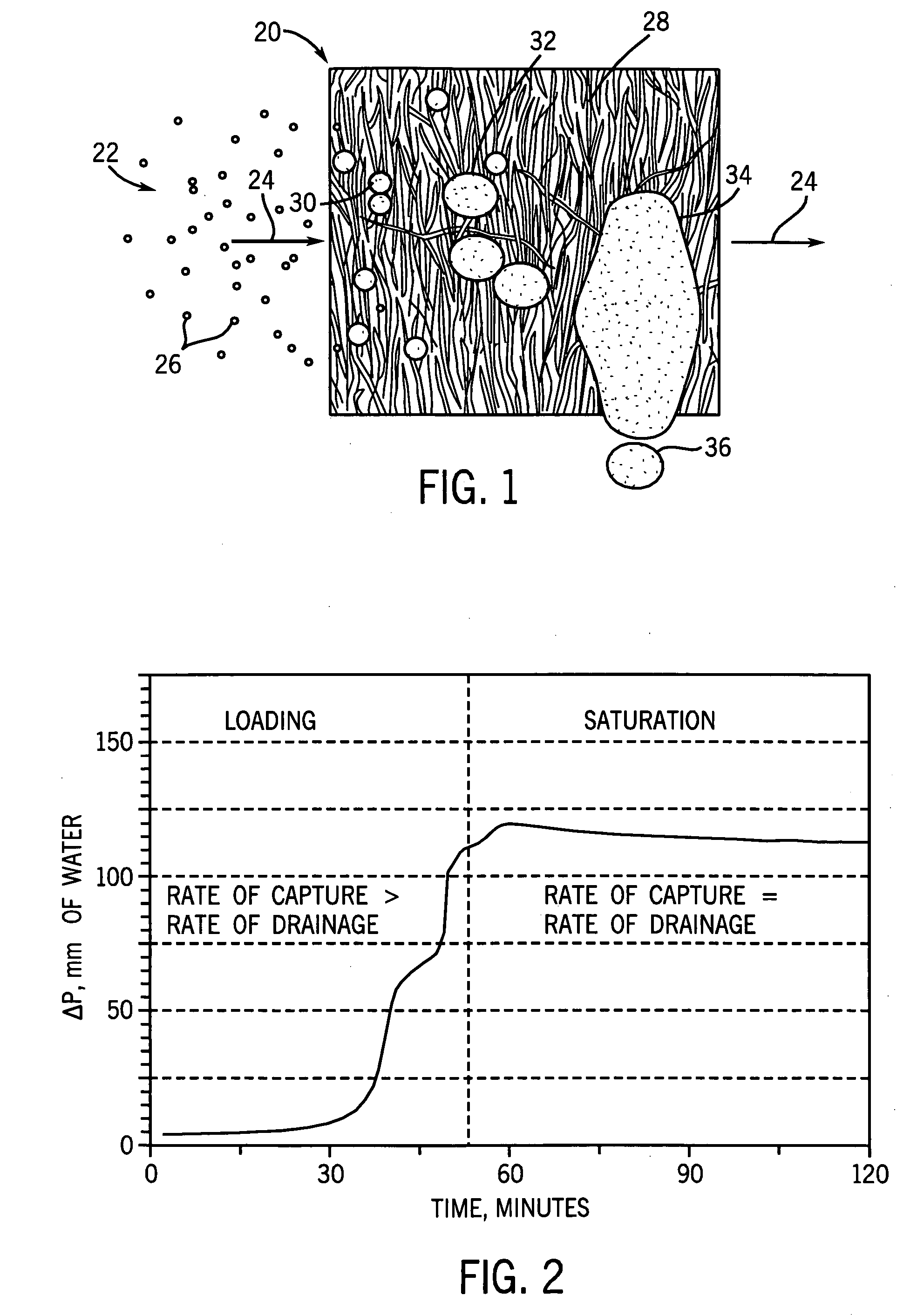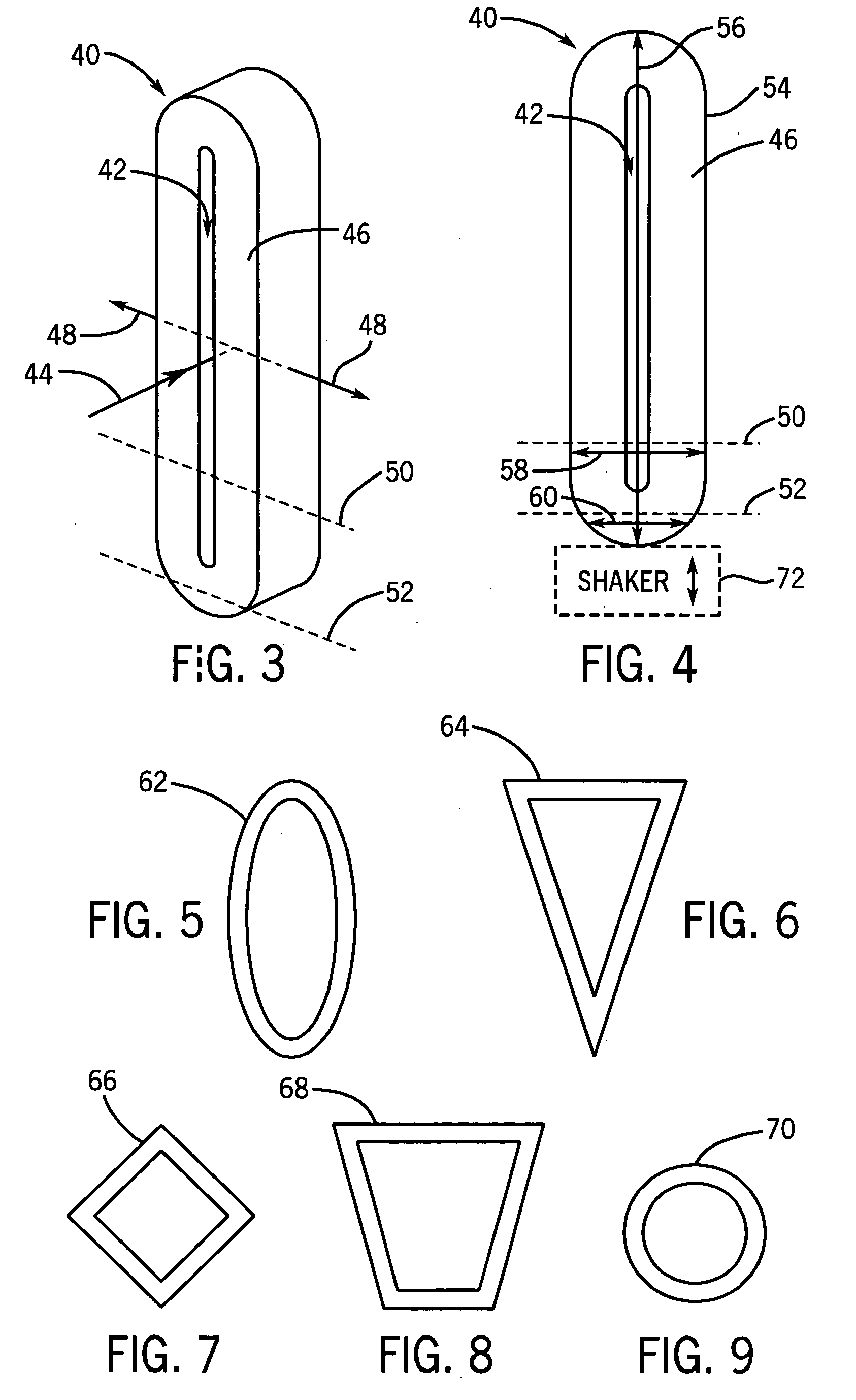Space optimized coalescer
a coalescer and space technology, applied in the field of coalescers, can solve the problems of not being able to unable to simultaneously achieve all three in an acceptable fashion, and unable to achieve the effect of achieving the three in an acceptable fashion, and achieves the effects of high removal efficiency, long service life, and low pressure drop
- Summary
- Abstract
- Description
- Claims
- Application Information
AI Technical Summary
Benefits of technology
Problems solved by technology
Method used
Image
Examples
Embodiment Construction
.S. patent application Ser. No. 11 / 230,694
[0044] The following description regarding FIGS. 1-25 is taken from the noted '694 application.
[0045]FIG. 1 shows a coalescer 20 for coalescing a medium 22 having two immiscible phases, namely a continuous phase 24 and a dispersed phase 26. For example, in the case of an engine crankcase ventilation coalescer, the continuous phase 24 is air, and the dispersed phase is oil, e.g. in the form of a fine mist having droplets 26 of about one micron and smaller in diameter. The continuous phase 24 flows from upstream to downstream, i.e. left to right in FIG. 1. The coalescer includes fibrous media 28 capturing droplets of the dispersed phase, coalescingly growing the droplets into larger drops, for example as shown at 30, 32, which further coalesce and grow to form pools such as 34 which drain as shown at 36. Within the gas or air stream 24, droplets 26 can collide and grow in size by drop to drop coalescence. Upon entry into coalescer 20, the dro...
PUM
| Property | Measurement | Unit |
|---|---|---|
| diameter | aaaaa | aaaaa |
| β | aaaaa | aaaaa |
| β | aaaaa | aaaaa |
Abstract
Description
Claims
Application Information
 Login to View More
Login to View More - R&D
- Intellectual Property
- Life Sciences
- Materials
- Tech Scout
- Unparalleled Data Quality
- Higher Quality Content
- 60% Fewer Hallucinations
Browse by: Latest US Patents, China's latest patents, Technical Efficacy Thesaurus, Application Domain, Technology Topic, Popular Technical Reports.
© 2025 PatSnap. All rights reserved.Legal|Privacy policy|Modern Slavery Act Transparency Statement|Sitemap|About US| Contact US: help@patsnap.com



